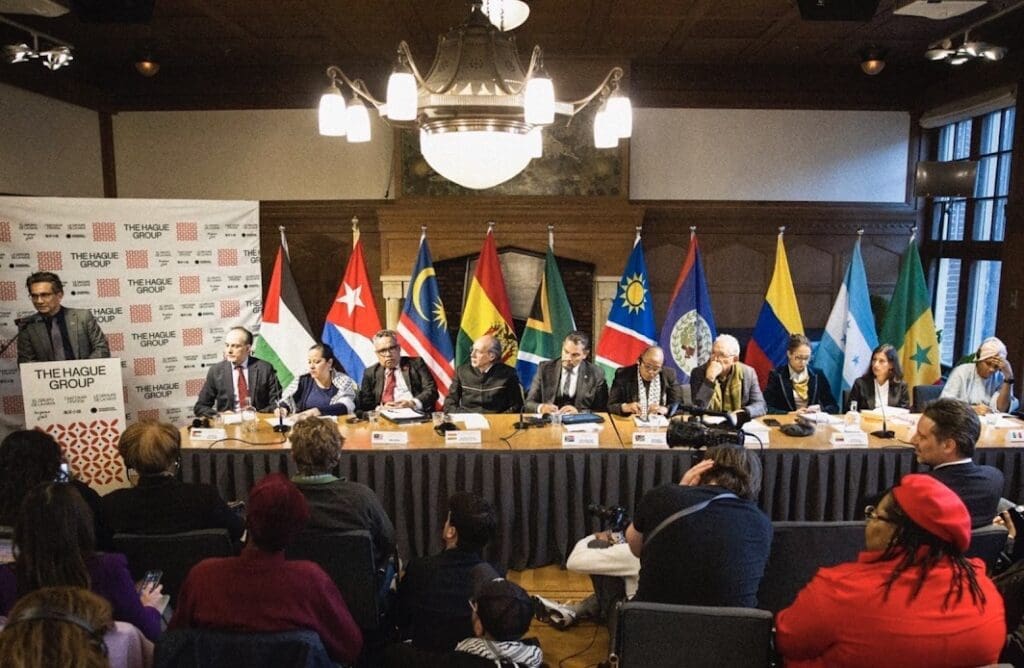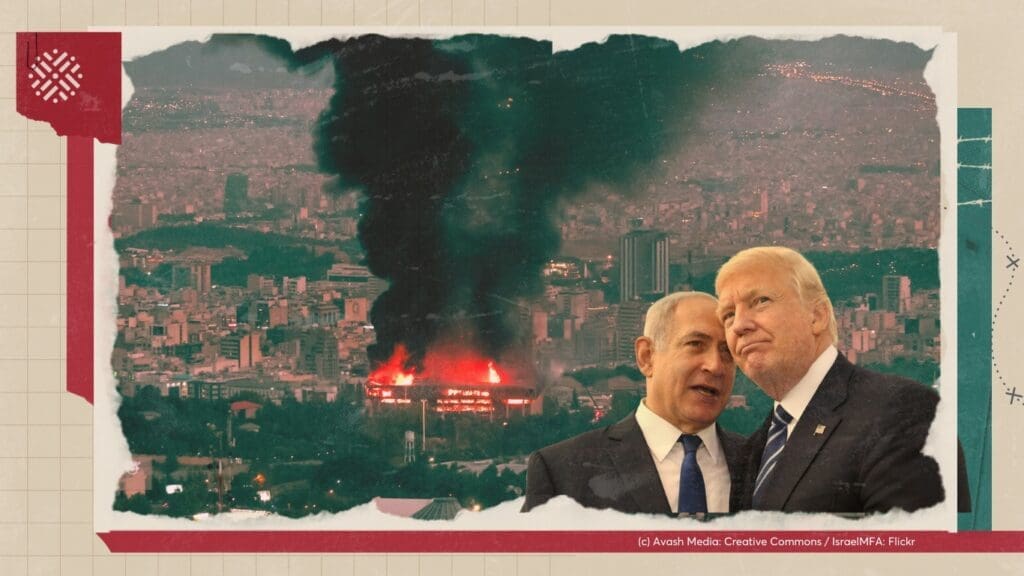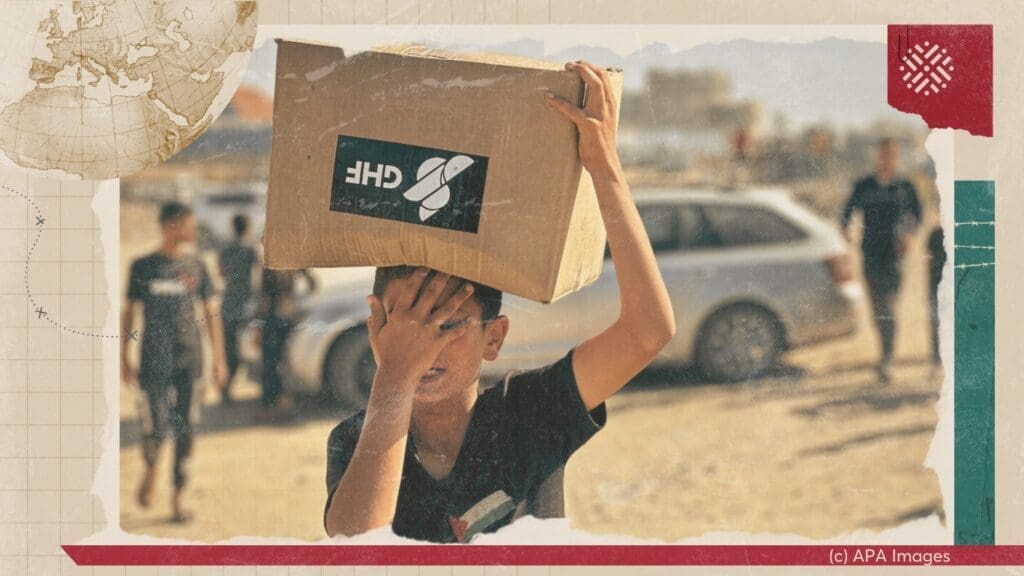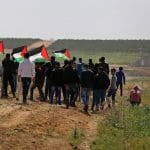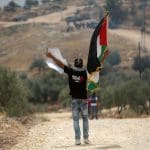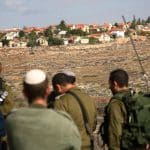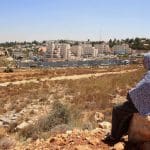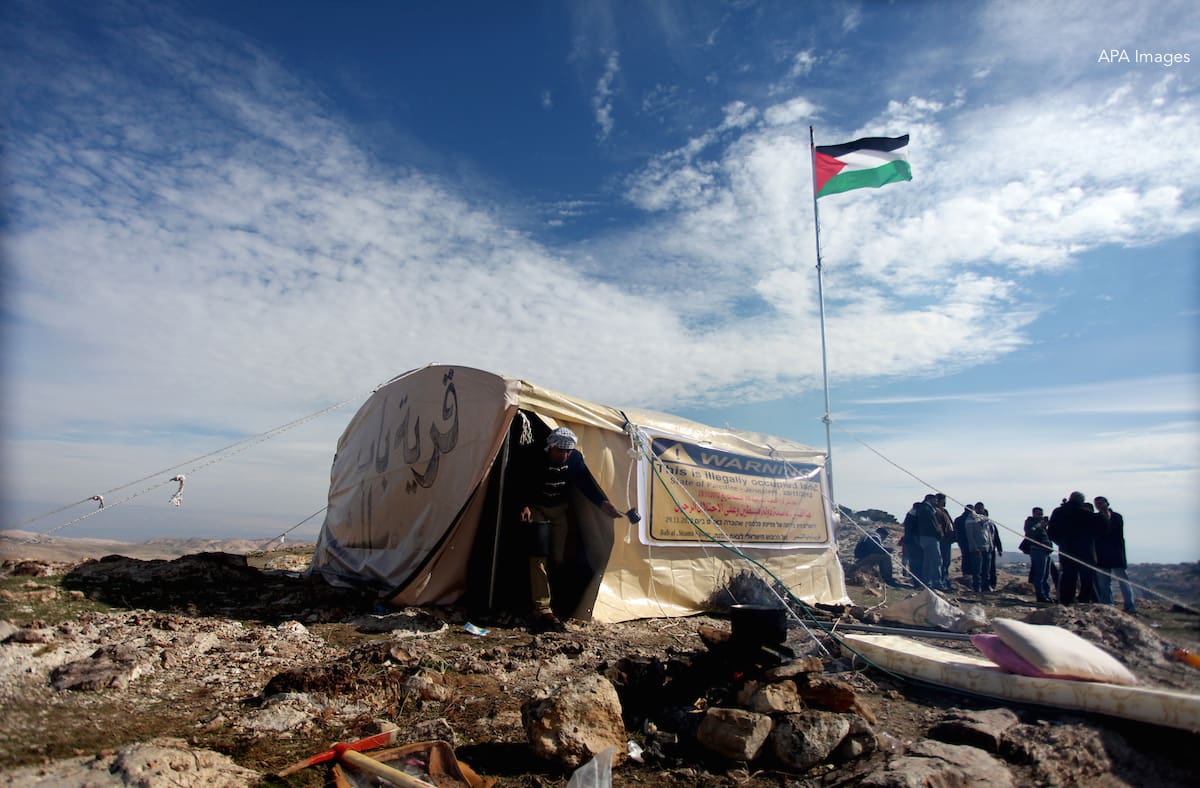
Executive Summary
It has been 42 years since the Israeli police shot and killed six Palestinian citizens of Israel as they protested the expropriation of Palestinian land. The protests were a result of collective action to resist not only Israel’s land seizures but also its policies of erasing the presence of Palestinians. March 30, 1976 has since been known as Land Day, and the fact that 2018 also marks 70 years since the Nakba – the loss of the Palestinian homeland and the creation of the state of Israel – adds to its significance this year. “The Great March of Return” organized in Gaza last month aimed to commemorate Land Day and to link it with the right of return of the Palestinian refugees. The fact that triple the number of those killed on the original Land Day were killed this year highlights how Palestinian resistance is deemed just as much as a threat as it was over four decades ago.
In settler colonial projects the main outcome is a rearrangement of physical spaces and indigenous people – a rearrangement that is neither peaceful nor passive, but constitutes a violent restructuring to make way for a new society with new social and spatial organization. In 1948 Zionists, in a settler colonial project, expelled 750,000 Palestinians. The 150,000 that stayed on the land had to be incorporated as citizens, yet they remained excluded on the basis that they were not Jewish.
In the early years after 1948, Israel utilized various mechanisms to appropriate land, including legislative measures. Israel’s justifications – then and now – for seizing the land are the acquisition of it for public use and the preservation of the Jewish character of the state.
Since Israel’s occupation of the West Bank in 1967, various “legal” mechanisms and military orders have similarly facilitated the colonization of Palestinian land. These include the expropriation of land in the name of security, through which Israel has seized land for at least 42 settlements, and the use of an Ottoman and British Mandate law that allows the state to confiscate land for a “public purpose.”
Today, the expropriation of Palestinian land is accelerating at an astonishing speed. Political maneuverings in Jerusalem have recently highlighted this crisis as the Israeli government capitalizes on the US administration’s disregard for international law. The US decision to move its embassy from Tel Aviv to Jerusalem has emboldened Israel to cement its complete control over the city.
In the face of this history, Palestinians have long engaged in acts of what some have termed spatial resistance – practices that affirm Palestinian presence and continuity on the land and challenge Israeli colonization. These include erecting Palestinian tent “villages” that assert Palestinian ownership of the land and challenge its ongoing confiscation, and maintaining a presence – long-term or temporary – at sites of destroyed villages.
Policy Recommendations
Palestinians engaged in grassroots activities should continue to link local struggles and call for coordination across the Green Line. Palestinians should also demand international and third party support and protection for these activities. International actors that have invested in infrastructure in Palestinian communities that Israel has destroyed should demand financial compensation.
Third states must use all possible measures to suppress Israeli violations as defined by international law, including supporting submissions of reported war crimes to the International Criminal Court, such as the one submitted in 2017 by Palestinian civil society organizations; demanding an extensive and formal probe into Israeli violations, such as the one called for by Human Rights Watch in 2016; and instituting and enforcing sanctions – a mechanism used against Russia for its annexation of Crimea.
Efforts must also be made to retroactively challenge Israeli property and land theft that has occurred since 1948. Palestinians should organize a mass effort to research and formulate their claims building on and expanding existing resources.
Overview
It has been 42 years since the Israeli police shot and killed six Palestinian citizens of Israel as they protested the expropriation of thousands of dunums of Palestinian land by the government. The protests were a result of mass collective action across the part of Mandate Palestine that became Israel in 1948. This saw Palestinian communities resisting not only Israel’s seizure of land but also its overall policies of erasing the very presence of Palestinians. This day – March 30, 1976 – has since been known as Yom el-Ard (Land Day), and is a major event on the Palestinian political calendar and in the collective narrative. The fact that 2018 also marks 70 years since the Nakba – the loss of the Palestinian homeland and the creation of the state of Israel – adds to the significance of Land Day this year. Indeed, “The Great March of Return” organized in Gaza last month was to commemorate this date but also to link it with the right of return of the Palestinian refugees. The fact that triple the number of those killed on the original Land Day, were killed this year also highlights how Palestinian resistance is deemed just as much as a threat as it was over four decades ago.12
Throughout this history, Palestinians have challenged Israel’s land theft – theft that, despite the fact that it is a flagrant violation of international law, continues unabated and is even accelerating. Indeed, with US President Donald Trump and his administration signaling to Israel that it can annex more land and build more settlements, particularly through its recent recognition of Jerusalem as Israel’s capital, Palestinians are increasing their resistance.
This policy brief examines how the domination of space is integral to settler colonialism through an examination of Israel’s historic and present-day appropriation of land, and explores the methods of Palestinian resistance to these practices. It concludes with recommendations for how Palestinians can collaborate across the borders that divide them, as well as with third parties, to resist the theft of their land and further the quest for Palestinian self-determination and rights.
Israel’s Land Acquisition Methods
The main outcome of settler colonial projects is a rearrangement of physical spaces and indigenous people – a rearrangement that is neither peaceful nor passive, but constitutes a violent restructuring to make way for a new society with new social and spatial organization. The Zionist settler colonial project that established the state of Israel in the place of Palestine in 1948 is no different. Zionists expelled 750,000 Palestinians in order to make room for the settler colonialists.3
One hundred and fifty thousand Palestinians remained on the land, creating a demographic dilemma for the Israeli state. These Palestinians had to be incorporated as citizens but would remain excluded on the basis that they were not Jewish. In 1967, the colonization of the West Bank and Gaza Strip saw the absorption of more Palestinians, yet rather than annex the territories and grant them citizenship, Israel placed them under military control.
In the early years after 1948, the Israeli state utilized various mechanisms to appropriate land, including legislative measures. Most notable was the Absentees’ Property Law of 1950, followed by the Land Acquisition Law of 1953. These laws allowed the state to appropriate land and title deeds from refugees on the basis of being absent from the country after November 29, 1947. The legislation was also applied to those who were displaced within the borders of the new state: Rather than recognize these Palestinians as internally displaced persons, Israel referred to them as “present absentees.” Israel’s main justifications – then and now – for seizing the land are the acquisition of it for public use and the preservation of the Jewish character of the state.
Settler colonial projects (are) a rearrangement of physical spaces and indigenous people that is neither peaceful nor passive Share on XThis justification was used at the beginning of March 1976, when the Israeli government announced plans to confiscate 20,000 dunums of land under the Developing the Galilee Program for the building of Jewish settlements and military training camps. The Palestinian mass strike and protests on March 30 mainly took place in six villages in the Galilee that had been placed under curfew – Sakhnin, Arraba, Deir Hanna, Tur’an, Tamra, and Kabul – though they also occurred in the Naqab (Negev) and Wadi Ara.4 Israeli police met the demonstrations with serious violence, shooting to death the six protestors and injuring hundreds more.
Land Day has become a date in which Palestinians throughout Mandate Palestine as well as in the diaspora organize land-based activities and reiterate their existential relationship with the land. The date also emphasizes the concept of sumud (steadfastness) as an important part of resistance to Israeli settler colonization.
Since the occupation of the West Bank in 1967, various “legal” mechanisms and military orders have similarly facilitated the colonization of Palestinian land. These include the expropriation of land in the name of security, in which Israel effectively subverts the Geneva Convention, which allows occupying states to temporarily confiscate land for security reasons. In this way Israel has seized land for at least 42 settlements, including the bypass roads that connect them to settlements across the Green Line. An equally devious mechanism is the use of an Ottoman and British Mandate law that allows the state to confiscate land for a “public purpose,” despite the fact that the areas seized have habitually been used by Palestinians for centuries for grazing purposes.
The implementation of the Oslo Accords in the early 1990s, which divided the West Bank into Areas A, B and C, furthered the expropriation of Palestinian land. Area C, which makes up 61% of the West Bank, is under full Israeli military control, including control over security and civil affairs. Israeli policy in Area C is particularly aggressive, serving the needs of 325,000 Israeli settlers while simultaneously disrupting and restricting Palestinian communities.
In the Jordan Valley, which falls under Area C, communities are particularly vulnerable to displacement and theft of ancestral lands. The valley is a strategically important area for Israel, predominantly because it acts as both a buffer zone to Jordan and the Occupied Syrian Golan Heights, but also because of its agricultural richness thanks to its abundant water supply and fertile land.
The construction of the Separation Wall in 2002 also enabled Israel to acquire more West Bank land. Built to separate the West Bank from Israel proper under the guise of Israeli “security,” the wall has laid the foundation for the annexation of many settlements. By placing the route inside the West Bank and not along the Green Line, Israel has de facto appropriated territory. The wall has separated Palestinians and cut off many agricultural communities from their land, and breaks the geographic contiguity of the West Bank.
Accelerating Land Theft
Today, the expropriation of Palestinian land is accelerating at an astonishing speed. Political maneuverings in Jerusalem have recently highlighted this crisis as the Israeli government capitalizes on the US administration’s brazen disregard for international law and the consensus with regard to Jerusalem. Its decision to move its embassy from Tel Aviv to Jerusalem is a de facto and de jure recognition of the city as Israel’s capital. This move has emboldened Israel to cement its complete control over the city.
The postponed Greater Jerusalem bill (which is still on the table) revealed plans to expand the municipal boundaries of Jerusalem to include four major and many smaller illegal settlements. The major settlements – Ma’ale Adumim, Givat Ze’ev, Betar Illit, and Efrat – are part of a bloc that stretches from Jerusalem to Hebron. At the same time, the bill would exclude certain Palestinian neighborhoods from the city’s jurisdiction, including that of Kufr Aqab. This gerrymandering of borders attempts to gain more land while at the same time squeezing Palestinians into as little space as possible. In addition to the physical conquering of space, these maneuvers attempt to control the narrative on Jerusalem so that the entire city becomes unquestionably part of Israel in mainstream international discourse.
Meanwhile, in the Naqab, the Israeli government is implementing the Prawer Plan, developed in 2011, to destroy 35 Palestinian Bedouin villages and to appropriate the land to build new Jewish Israeli settlements as part of its Development of the Negev Program. The Negev Program is the brainchild of the Ministry for the Development of the Negev and the Galilee, a successor to the aforementioned Developing the Galilee Program, whose land confiscation led to the Land Day protests in 1976. The ministry was founded in 2005 to bring “growth and prosperity…as it is quite clear that the future of Israel lies in the development of these regions.”
The expropriation of Palestinian land is accelerating at an astonishing speed Share on XThe Naqab and the Galilee are particular areas of concern for the Israeli government because of their relatively high concentration of Palestinians. According to some estimates, the Galilee has a majority Palestinian population.5 The ministry thus aims to consolidate a contiguous Jewish presence while minimizing the Palestinian Arab presence; this is demonstrated by the demolition of Bedouin villages on the basis that they are “unrecognized” by the state.
This appropriation of indigenous space for the purpose of the settler population through such mechanisms as settlements, de jure annexation, physical expulsion, and denial of land claims is found in settler colonial projects the world over. In Palestine, it is occurring on both sides of the Green Line, and is part and parcel of what is dubbed the continuous Nakba, or al Nakba al mustimirrah.
Spaces of Palestinian Resistance
In the face of this continuous Nakba, Palestinians have long engaged in acts of what some writers have termed spatial resistance – practices that affirm Palestinian presence and continuity on the land and challenge Israeli colonization. There are various initiatives of such resistance, both past and ongoing, that incorporate land re-appropriation and steadfastness:
Bab al Shams and Ein Hijleh
Approximately 250 Palestinian activists from across historic Palestine established the Palestinian “village” of Bab al Shams, near the illegal Jewish Israeli settlement of Ma’ale Adumim, in January 2013. The location of the village was on privately owned Palestinian land, for which the activists received permission from the owner. The village was also within the E1 corridor, the strip of land that effectively cuts the West Bank in half.
The activists erected some 25 tents to establish the “village,” and despite receiving an injunction from the High Court of Justice, which blocked the village’s eviction for six days, the Israeli army forcibly removed the activists after only two days. In spite of its short life, the village was a form of direct action that asserted Palestinian ownership of the land and challenged its ongoing confiscation. Bab al Shams also highlighted Palestinian presence in the Jerusalem area.
The following year, the Palestinian Popular Struggle Coordination Committee established a protest village similar to Bab el Shams at the site of Ein Hijleh, a destroyed Palestinian village in the Jordan Valley. During the week in which the activists managed to stay in the village, they installed solar panels, cleared the land, and held various political and cultural activities. After seven days, the Israeli army forcibly dismantled the encampment, arrested dozens of activists, and injured many more.
Iqrith and the March of Return
Since 2012, young activists have maintained a continuous physical presence on their land at the site of Iqrith, a Palestinian village in the Galilee destroyed in 1948. The descendants of families from the village are internally displaced Palestinians (“present absentees”), meaning that while they hold Israeli citizenship and reside within Israel’s borders, they are forbidden from returning to their pre-1948 villages and land. Iqrith is an unusual case because in 1948 Zionist forces told its residents that they could return after the fighting. While this promise was not fulfilled, in 1951 Iqrith’s residents won a High Court decision that allowed them to return.6
In Palestine (land theft occurs) on both sides of the Green Line…part and parcel of what is dubbed the continuous Nakba Share on XHowever, the decision was blocked by the military court, which maintains that the residents’ return would be a risk to state security. The third and fourth generation activists in Iqrith keep a steadfast presence in the village and have set up an encampment in an annex of the village church. This presence is maintained despite the military ruling and attempts by the Israeli authorities to disrupt them by arresting activists, destroying structures, and uprooting plants. The activists’ presence asserts their Palestinian identity and challenges the notion that Palestinian land is limited to the West Bank and Gaza Strip.
Another initiative organizes Palestinians’ return to destroyed villages. The March of Return has mainly taken place in the Galilee, where most of the internally displaced Palestinians live. Two years ago, it was held in the Naqab, and this year it will take place at a destroyed village near Haifa. Since the Association for the Rights of the Internally Displaced and other groups organized the first march 1999, it has become a significant event inside historic Palestine. It coincides with Israeli Independence Day under the motto of “Your independence is our Nakba.” Similar to the Iqrith activism, the March of Return is a symbolic reversing of original displacement through the physical act of returning, albeit temporarily, to the site of destruction. The march also challenges the Zionist Independence Day narrative of “a land without a people for a people without a land” by reasserting Palestinian presence prior to 1948.
Al Araqib and Susiya
Al Araqib is a Palestinian Bedouin village located in the Naqab that has existed for two centuries. Israeli forces first displaced its residents in 1951 for “security” purposes, and Israel appropriated the land under the Land Acquisition Law. In the late 1990s, 45 families returned to the land in an attempt to prevent the Jewish National Fund from planting a forest on top of it.
Using the claim that the village is “unrecognized” and built on Israeli state land, attempts to displace the people of Al Araqib have intensified in recent years. Since 2010, Israeli authorities have destroyed the village 120 times, usually using bulldozers to raze structures and riot police to remove residents who try to protect their homes with their bodies. As an “unrecognized” village, it is also denied the most basic of services. Many of the residents have moved to neighboring towns, yet there are some who remain and rebuild their houses, often using material salvaged from the rubble. They frequently hold rallies and protests to highlight their struggle against displacement and land theft.
Just across the Green Line a similar struggle is taking place in the village of Susiya, located in Area C south of Hebron. Shortly after establishing an illegal settlement in 1983 on Susiya’s land, the Israeli government demolished the homes of 60 families. The residents rebuilt nearby, but in 2001 Israeli demolished the entire village. Since 2011 Susiya has faced a series of mass demolitions by the authorities in an attempt to establish Israel’s total control over Area C.
As the Oslo Accords placed Area C under Israeli military control, Israel is able to deny Palestinian planning and building requests on the grounds of security. As such, each time Susiya’s residents rebuild their homes, they are served once again with demolition orders. Yet Susiya’s residents have thus far stayed on their land, living in the most basic conditions to do so. They have also established a campaign that has attracted the support of international activists. Both Al Araqib and Susiya are demonstrating steadfastness, yet their durability remains uncertain in the context of accelerating Israeli colonization and annexation.
Shoring up Palestinian Rights to the Land
As discussed above, Palestinians have used many ways to resist Israel’s land theft. To stop further incursions on Palestinian land and support and build upon Palestinian spatial resistance, efforts in three areas deserve focus:
Promote grassroots spatial resistance
With popular support, initiatives that physically re-assert Palestinian presence on land could challenge Israeli domination of space. Yet Palestinians face challenges of sustainability. To tackle this, Palestinians engaged in grassroots activities should continue to link local struggles and call for coordination across the Green Line. This would not only highlight the greater Israeli colonization project, but would also challenge Israel’s definition of what is considered Palestine and who is considered Palestinian.
(Three areas are key) to stop further incursions on Palestinian land and support and build upon Palestinian spatial resistance Share on XPalestinians should also demand international and third party support and protection for these activities, such as funding anti-bulldozer barriers in vulnerable Palestinian communities. International actors who have invested in infrastructure in Palestinian communities that Israel has destroyed should also demand financial compensation. Their investment in communities and projects must be coupled with such a condition to make demolitions and displacement financially taxing for Israel.
Prevent further theft of Palestinian land
Third states are bound by international humanitarian law to use all possible measures to suppress violations. The law is clear that the displacement of an occupied population and settlement building by the occupier are violations. Thus, all international mechanisms that can be used to prevent further appropriation and annexation must be mobilized. These include but are not limited to:
- Support submissions of reported war crimes to the International Criminal Court, such as the one submitted in 2017 by Palestinian civil society organizations.
- Demand an extensive and formal probe into Israeli violations, such as the one called for by Human Rights Watch in 2016.
- Institute and enforce sanctions – a mechanism used against Russia for its annexation of Crimea.
Build cases for property and land restitution
Property and land restitution and compensation are an essential part of any future reconciliation process, as seen in South Africa following the dismantlement of the apartheid regime. Efforts must be made to retroactively challenge Israeli property and land theft that has occurred since 1948. Palestinians should organize a mass effort to research and formulate their claims; a wealth of documentation already exists that would support them, including the UNCCP files, UNRWA records, official Israeli state records, and oral testimonies.
With such targeted and organized efforts, Palestinians and their allies could obstruct Israel’s relentless seizure of Palestinian land and secure policies in line with Palestinian rights as enshrined in international law.
- This policy brief has been produced in partnership with the Heinrich-Böll-Stiftung. The views expressed herein are those of the author and therefore do not necessarily reflect the opinion of the Heinrich-Böll-Stiftung.
- Al-Shabaka publishes all its content in both English and Arabic (see Arabic text here). To read this piece in French, please click here. Al-Shabaka is grateful for the efforts by human rights advocates to translate its pieces, but is not responsible for any change in meaning.
- This number is an approximation based on oral testimonies and various institutional records and is cited by scholars including Ilan Pappe in The Ethnic Cleansing of Palestine.
- The protests were mobilized under the leadership of the Committee for the Defense of Arab Lands, which had been established jointly by various student bodies, Abnaa el Balad, and the Communist Party.
- See Ben White’s report ‘Palestinians in Israel’s democracy: Judaising the Galilee’; https://www.middleeastmonitor.com/wp-content/uploads/downloads/briefing-paper/palestinians-in-israel-democracy.pdf
- The village of Kufr Birim is a similar case; the village’s residents were also forbidden from returning despite a High Court decision to the contrary.

